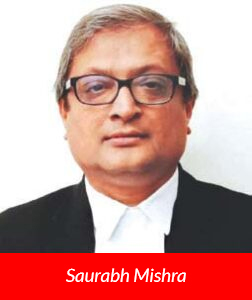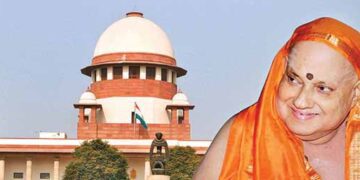 In 1973, the landmark judgment of Kesavananda Bharati v. State of Kerala changed the course of Indian constitutional history. As we mark the 50th anniversary of this watershed case, it is essential to revisit its impact on the Indian legal landscape, understand the nuances of the basic structure doctrine, explore how the Supreme Court has invoked this doctrine over the years, and examine its influence on foreign jurisdictions.
In 1973, the landmark judgment of Kesavananda Bharati v. State of Kerala changed the course of Indian constitutional history. As we mark the 50th anniversary of this watershed case, it is essential to revisit its impact on the Indian legal landscape, understand the nuances of the basic structure doctrine, explore how the Supreme Court has invoked this doctrine over the years, and examine its influence on foreign jurisdictions.
The Kesavananda Bharati case was heard by the largestever bench of 13 judges, and the judgment remains one of the most significant in Indian legal history. The case arose out of a challenge to the constitutionality of the Kerala Land Reforms Act, which aimed to redistribute land in the state.
The petitioner, Swami Kesavananda Bharati, claimed that the act violated his fundamental rights under Articles 25 and 26 of the Indian Constitution. The case escalated into a broader examination of the limits of Parliament’s amending power under Article 368.
Basic structure doctrine
The Supreme Court, by a wafer-thin majority of 7:6, propounded the basic structure doctrine, which holds that the Parliament, while exercising its amending power, cannot alter the basic structure of the Constitution.
Although the judgment did not enumerate an exhaustive list of elements comprising the basic structure, it did mention features like democracy, secularism, judicial review, and the federal structure of the Constitution.
Over the years, the Supreme Court has invoked the basic structure doctrine in numerous cases to protect the core values enshrined in the Constitution. Some of the prominent cases are:
1. Indira Nehru Gandhi v. Raj Narain (1975): This case involved the constitutionality of the 39th Amendment, which sought to place the Prime Minister’s election beyond judicial scrutiny. The court held that the amendment violated the basic structure as it encroached upon the principle of free and fair elections and the separation of powers.
2. Minerva Mills v. Union of India (1980): The court struck down sections of the 42nd Amendment, which sought to give Parliament unlimited power to amend the Constitution. The court held that the limited amending power itself was part of the basic structure and could not be expanded.
3. SR Bommai v. Union of India (1994): In this case, the court used the basic structure doctrine to uphold the secular character of the Indian Constitution. The judgment laid down guidelines to prevent the misuse of Article 356, which allows the President to dissolve a state government if the constitutional machinery fails.
Adherence to guidelines
Since the Kesavananda Bharati case, the Supreme Court of India has demonstrated a consistent commitment to upholding the basic structure doctrine. The court has invoked the doctrine in various cases to scrutinise amendments and legislation that threatened the Constitution’s core values, ensuring the preservation of the basic structure.
However, critics argue that the doctrine’s inherent vagueness and lack of an exhaustive list of basic structure components have occasionally led to inconsistencies and subjective interpretations by the judiciary. Nonetheless, the court’s adherence to the doctrine over the years has largely succeeded in keeping the Constitution’s sanctity intact and maintaining the balance of power among the three branches of government.
Impact in other countries
The Kesavananda Bharati case and the basic structure doctrine have had a significant impact on constitutional jurisprudence in other countries as well. Some notable examples include: 1. Bangladesh: In the case of Anwar Hossain Chowdhary v. Bangladesh (1989), the Supreme Court of Bangladesh adopted the basic structure doctrine, declaring that the Constitution’s fundamental features could not be altered by amendments.
2. Pakistan: Although Pakistan’s Supreme Court initially rejected the basic structure doctrine in the Zafar Ali Shah case (2000), it later embraced the concept in the Sindh High Court Bar Association v. Federation of Pakistan case (2009), acknowledging the importance of preserving the Constitution’s core principles.
3. Kenya: In the case of Commission for the Implementation of the Constitution v. The National Assembly of Kenya (2013), the High Court of Kenya cited the Kesavananda Bharati case as persuasive authority and recognised the basic structure doctrine as applicable to the Kenyan Constitution.
These examples demonstrate the far-reaching influence of the Kesavananda Bharati case and its contribution to the development of constitutional law globally.
Conclusion
As we celebrate 50 years of the Kesavananda Bharati case, we recognise the foresight and wisdom of the judges who propounded the basic structure doctrine. This doctrine has played a pivotal role in safeguarding the core principles of Indian democracy, maintaining the delicate balance between the different organs of the state, and inspiring similar approaches in foreign jurisdictions.
The legacy of Kesavananda Bharati will continue to be a guiding light for the Indian judiciary and the legislature, ensuring that the Constitution remains a living, breathing document, capable of adapting to the changing needs of society while preserving the fundamental values that define the nation.
















